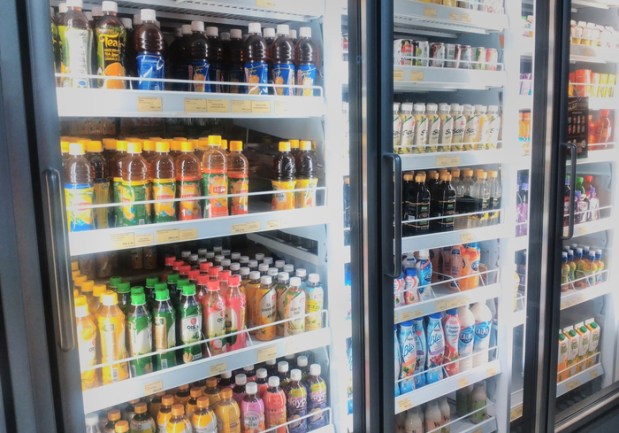ShelfX Helps Retailers Bring Self-Service Payments To Coolers

Unattended retail is on the move, with the American interactive kiosk market projected to grow by 7.2 percent annually through 2021. Self-service kiosks generated annual revenues of $218 million in 2016, and vending machines bring in $7 billion in sales each year, according to the PYMNTS Unattended Retail Tracker. This trend raises the question: How can retailers, especially those selling food and beverages, tap into this growing market?
Retailers might want to get in on the action for refrigerated food and beverages, and they may already have coolers — just not the payment technology to make them self-service. Companies such as ShelfX, however, seek to bring commerce to these existing coolers with kits that retailers — or facilities such as airports — can install on their fridges. “It makes them an unattended retail solution,” ShelfX CEO Ran Margalit told PYMNTS.com in an interview.
With ShelfX’s technology, customers can unlock fridges by providing a credit card or another payment option. Once the system determines that the payment is valid, ShelfX unlocks the door. Then, consumers are free to browse the selection. They can even take items out of the cooler and read its packaging — if they decide not to purchase a particular item, they can place it back in the cooler. This ability is built into the system through weight sensors, so the technology only charges consumers for the items that they ultimately take away from the cooler.
Technology from companies such as ShelfX can find its way into all sorts of locations, including workplaces, hospitals, universities, train stations and even airports. The machines can be particularly helpful in places like hospitals, where on-site meal options might not be available to staff around the clock. To that end, self-service technology provides some unique payment options for such locations: Doctors, for example, can swipe their employee badges to receive discounts or use a daily allowance. In that use case, a doctor could potentially receive a $10 allowance if they work from midnight to 7 a.m. — times that a cafeteria might not be open.
Marketing Opportunities
Beyond convenience, this technology comes with some advantages for companies that want to bring new products to a market. One of ShelfX’s customers, for example, wanted to introduce consumers to a new chocolate yogurt — and used ShelfX fridges in the roll out. For its launch, the company sent out promotional emails that offered customers a free yogurt in the refrigerator. The company was able to track who reacted to the email and who came to pick up the yogurt for the fridge, with the help of the technology. “There is a lot of information we can track end-to-end on the consumer’s behavior,” Margalit said.
This strategy marks a departure from having an attendant ask consumers if they want to sample a yogurt. With ShelfX coolers, however, a customer can try a new product, and a producer can learn valuable information. A customer’s decision to pick up a yogurt from the cooler, in essence, serves as a form of feedback. And, if a consumer decides to return to a ShelfX fridge, that action provides even further product feedback. Beyond marketing, technologies such as ShelfX tap into consumer preferences for “good, fresh, healthy food,” Margalit said.
The Road Ahead
In particular, ShelfX provides an advantage over other systems that seek to enable unattended retail. Other solutions provide radio-frequency identification (RFID) stickers, which come with some disadvantages. For one, Margalit said, the stickers cost money — it is an expense to put the stickers on products. In addition, the stickers provide a security risk, as consumers can remove the stickers and steal the products. By contrast, Margalit reports that ShelfX has only seen 8 attempted thefts among 5 million transactions.
In all, Margalit sees a wide range of applications for the technology. Beyond commercial and public buildings, ShelfX is looking to put the technology in residential buildings in Japan. Additionally, it is looking at putting its technology in a container that could be deployed in myriad locations — like at festivals, such as Coachella or Burning Man — showing that unattended retail technology has potential beyond the four walls of a retail store, medical facility or transportation hub.
